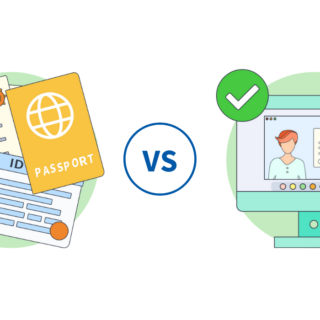
Reducing Credit Card Fraud
Reducing Credit Card Fraud: Strategies, Policies, and Technological Innovations
Credit card fraud is a persistent and evolving threat in the digital age. As businesses increasingly rely on electronic transactions, the need for robust security measures has never been more critical. This comprehensive article explores how companies can reduce credit card fraud through effective policies, security protocols, and technological advancements. Additionally, we will examine what major players like Mastercard and Visa are doing to enhance payment security and how digital payments have become safer than ever before.
Understanding Credit Card Fraud
Credit card fraud involves unauthorized use of credit card information to make purchases or withdraw funds. Common types of credit card fraud include:
- Card-Not-Present (CNP) Fraud: Occurs when the cardholder is not physically present during the transaction, typical in online purchases.
- Skimming: Involves copying card information using a device attached to ATMs or point-of-sale terminals.
- Phishing: Fraudsters trick cardholders into providing their card details through fake websites or emails.
- Identity Theft: Using stolen personal information to open new credit card accounts or make unauthorized purchases.
Strategies to Reduce Credit Card Fraud
1. Implementing Robust Security Protocols
a. EMV Chip Technology: Europay, Mastercard, and Visa (EMV) chip technology significantly reduces fraud by encrypting transaction data, making it harder to clone cards.
b. Tokenization: Replaces sensitive card information with a unique identifier (token), which is useless if intercepted by fraudsters.
c. Encryption: Ensures that card information is encrypted during transmission, preventing unauthorized access.
2. Enhancing Authentication Methods
a. Two-Factor Authentication (2FA): Requires an additional verification step, such as a code sent to the cardholder’s mobile device, making unauthorized access more difficult.
b. Biometric Verification: Uses fingerprint, facial recognition, or iris scans to authenticate users, providing a higher level of security.
3. Monitoring and Analyzing Transactions
a. Real-Time Monitoring: Implement systems that monitor transactions in real-time and flag suspicious activities for further investigation.
b. Machine Learning and AI: Utilize machine learning algorithms to analyze transaction patterns and detect anomalies that may indicate fraud.
4. Strengthening Policies and Procedures
a. Regular Audits: Conduct regular audits of financial records and transactions to identify and address potential vulnerabilities.
b. Employee Training: Educate employees about the latest fraud tactics and how to handle sensitive card information securely.
c. Customer Awareness: Inform customers about common fraud schemes and encourage them to monitor their accounts regularly.
What Mastercard and Visa Are Doing
Mastercard
1. Mastercard Identity Check: Utilizes biometric authentication and SMS-based one-time passwords to verify cardholder identity during online transactions.
2. Mastercard SecureCode: Adds an additional layer of security by requiring a private code for online purchases, ensuring that only the cardholder can complete the transaction.
3. AI and Machine Learning: Employs AI to analyze transaction data and identify patterns indicative of fraud, enabling proactive prevention measures.
Visa
1. Visa Secure: Leverages 3-D Secure technology to authenticate users through additional verification steps, reducing CNP fraud.
2. Visa Advanced Authorization: Uses real-time predictive analytics to assess the risk of transactions and flag potentially fraudulent activities.
3. Tokenization and Encryption: Continuously enhances its tokenization and encryption technologies to protect card information during transactions.
The Rise of Digital Payments: Safer Than Ever Before
1. Contactless Payments
Contactless payments, facilitated by Near Field Communication (NFC) technology, offer a secure and convenient way to make transactions. Since the card never leaves the cardholder’s possession, the risk of skimming is reduced.
2. Mobile Wallets
Mobile wallets like Apple Pay, Google Pay, and Samsung Pay use tokenization and biometric authentication to secure transactions. These platforms do not store actual card numbers, adding an extra layer of protection.
3. Blockchain Technology
Blockchain technology offers a decentralized and tamper-proof way to record transactions. While still emerging in the payment sector, blockchain holds promise for reducing fraud by ensuring the integrity and transparency of transaction data.
4. Enhanced Encryption Standards
The Payment Card Industry Data Security Standard (PCI DSS) mandates rigorous encryption standards to protect cardholder data during transmission and storage, making digital transactions more secure.
5. Regulatory Compliance
Governments and regulatory bodies are imposing stricter compliance requirements on financial institutions and businesses, ensuring higher security standards and accountability.
Conclusion
Reducing credit card fraud requires a multifaceted approach that combines robust security protocols, advanced authentication methods, continuous monitoring, and strong policies. Companies must stay vigilant and adapt to emerging fraud tactics to protect their customers and themselves.
Mastercard and Visa are leading the charge by implementing innovative technologies and practices that enhance payment security. The rise of digital payments, facilitated by advancements in contactless payments, mobile wallets, blockchain, and encryption standards, has made electronic transactions safer than ever before.
By embracing these strategies and leveraging the latest technologies, businesses can significantly reduce the risk of credit card fraud and foster a secure environment for digital transactions.
Ad Flare Software OÜ,
VAT: EE102734135
Vana-Viru 13, Estonia, Tallinn
Info





